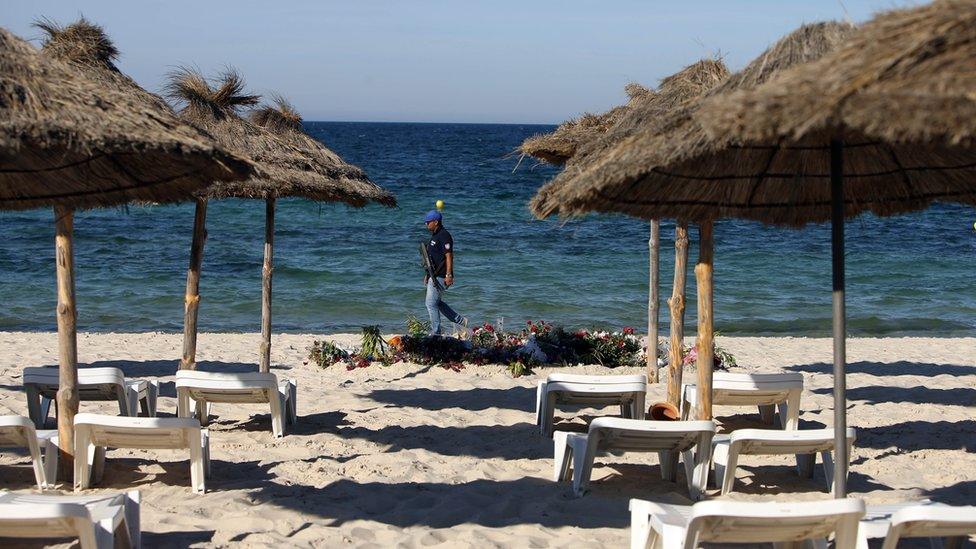Terror dampens vital tourism to parts of North Africa
- Published

Sun loungers sit empty on a beach in Sousse, Tunisia after gunmen attacked tourists
Attacks by the Islamic State group have led to a dramatic fall in tourism in parts of North Africa, where millions rely on the trade to make a living.
New figures from the United Nations World Tourism Organisation (UNWTO) show that visits to North Africa fell by 8% in 2015, bucking a global upward trend.
International tourism grew by 4.4% overall, to reach a total of 1.18bn arrivals, according to the UNWTO.
But countries such as Tunisia, Egypt and Morocco have been hit hard.
Beach resorts such as Sharm el-Sheikh in Egypt, where a passenger jet was loaded with a bomb in November, and Sousse in Tunisia, where gunmen opened fire at holidaymakers in June, have seen visitor numbers sharply decline.
Some 3,500 British tourists left Tunisia in the days after the Sousse attack, in which 38 people - 30 of them British - were shot by Islamist gunman at the Port El Kantaoui resort.
Tunisia was still reeling from an attack in March, when gunmen killed 22 people at the Bardo museum in Tunis, mostly European tourists. And the country was a whole was still attempting to reinvigorate tourism following the Arab Spring.
Egypt was also trying to rehabilitate its image after the 2011 uprising there, and had been promoting the Sharm el-Sheikh resort as a safe and luxurious destination. But the plane crash, which killed 148 people and was attributed to IS, led a number of foreign countries to ground all flights to and from the resort.
Morocco has not suffered directly from terrorism, but the Foreign Office does warn , externalpotential travellers that they face "a high threat from terrorism" in the country.
Limited data available for Africa as a whole suggested that tourism was down by 3% to 53m - 8% in North Africa and 1% in Sub-Saharan Africa.
Strong continued growth in other parts of the world meant that global tourism rose, although no individual region saw gains as high as North Africa's decline.
Europe, the Americas, and Asia and the Pacific all recorded about 5% growth. Arrivals reached 609 million in Europe, 29 million more than in 2014. Arrivals in the Americas grew 9 million to 191 million and Asia and the Pacific recorded 277 million, 13 million more than last year.
Arrivals to the Middle East increased by 3% to a total of 54 million.
China is among the largest sources of tourists, according to the UNWTO, benefitting Asian destinations such as Japan and Thailand, as well as the United States and various European countries.
The number of tourists from Russian and Brazil declined significantly, reflecting the economic constraints in both countries.
Citing a "larger degree of uncertainty and volatility", the UNWTO has predicted between 3.5% and 4.5% of growth in global tourism in 2016.
- Published29 June 2015

- Published15 November 2015

- Published5 November 2015
